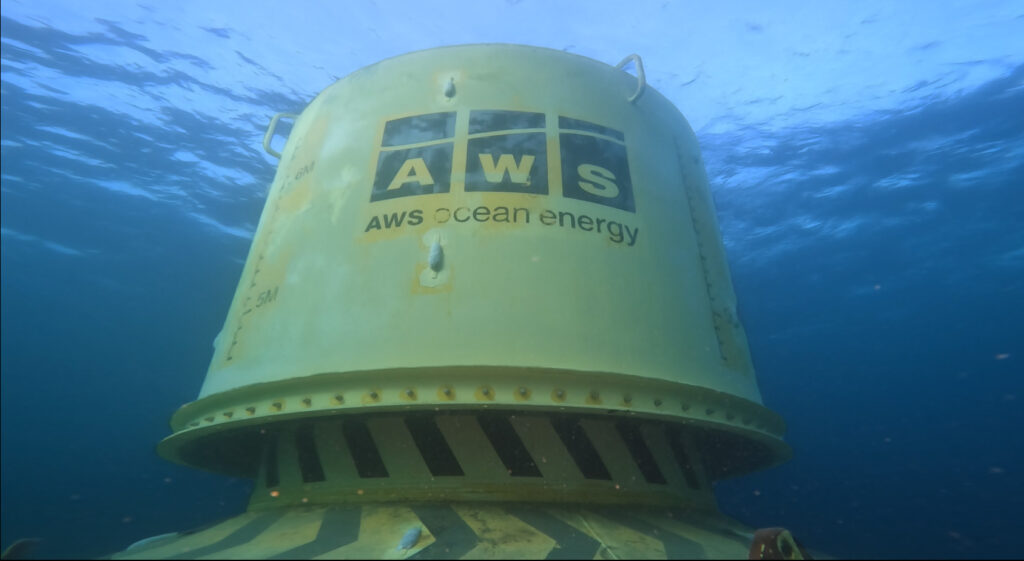AWS Ocean Energy confirmed highly encouraging results from the current phase of sea trials of its wave energy device at the European Marine Energy Centre (EMEC) in Orkney.
In a key highlight of the scientific testing programme to date at EMEC’s Scapa Flow test site, the Waveswing wave energy converter captured average power over 10kW and peaks of 80kW, during a period of moderate wave conditions. These figures exceeded the developer’s own predictions by 20%.

Other key findings underline the survivability potential of the subsea Waveswing which continued to deliver power in poor weather conditions. AWS demonstrates this in the following simple but highly effective video clip, shot during Force 10 gales, showing a steel nut suspended on a string inside the device.
The testing programme also demonstrated that deployment of the Waveswing from sitting on the quayside to being installed and fully operational is possible in under 12 hours.
The current phase of sea trials is scheduled to complete by the year end and AWS is looking to re-deploy for further testing early in 2023.
Simon Grey, CEO of AWS Ocean Energy said: “These figures underline our strong belief that Waveswing is the real deal. While we have always been confident about the performance potential of the Waveswing, it is wonderful to see that confidence endorsed by real data. We believe this performance compares very favourably with equivalent figures for any previous wave device tested on the same site. We are now actively seeking discussions with commercialisation partners, other end users and anyone who is genuinely interested in developing commercial wave power. This includes for example sponsored testing programmes, so that partners can get to know the Waveswing and its potential up close.”
Looking to the future, Mr. Grey added, “The Waveswing features a single absorber design, with unique features which make it ideal for remote power applications such as powering subsea oilfield assets and oceanographic monitoring. However, for utility scale power, we are convinced the future lies in multi-absorber platforms which can achieve the scale necessary for wave power to make a significant contribution to renewable energy supplies. We expect to develop platforms hosting up to twenty 500 kW units with a potential capacity of 10 MW per platform”.
The £3.4 million prototype development project has been funded by Wave Energy Scotland (WES), as part of the Novel Wave Energy Converter development programme and also supported by the Interreg North-West Europe’s Ocean DEMO project.

